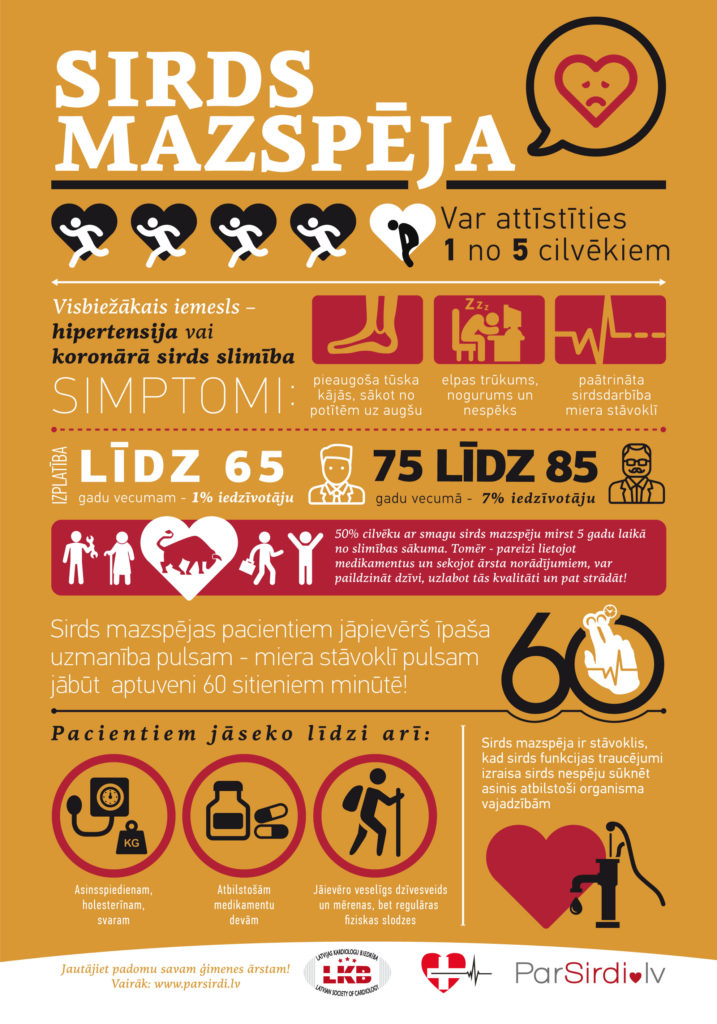

Is there a link between HBP and heart failure?

Dotajā pētījumā visbiežāk sastopama blakussaslimšana bija arteriāla hipertensija (AH) (98,6%), no tiem 1.pakāpe tika konsatēta 29,1%, 2.pakāpe 66,2%, 3.

83 gadi), sieviešu grupā 67 gadi (min.37, maks. Iekļauto pacientu vidējais vecums vīriešu grupā bija 64 gadi (min. Anamēzes dati tika iegūti izmantojot pacientu aptaujas anketas un medicīnisku dokumentāciju. Pētījumā tika iekļauti 150 pacienti (45 sievietes un 105 vīrieši) ar persistējošo ātriju fibrilāciju pirms sinusa ritma atjaunošanas ar elektrisko kardioversiju. Dotā pētījuma mērķis bija noteikt blakussaslimšanu prevalenci pacientiem ar persistējošu ātriju fibrilāciju, kam sinusa ritma atjaunošanai tika veikta elektriskā kardioversijas Latvijas Kardioloģijas centrā un salīdzināt ar literatūras datiem. Ātriju fibrilācija ir visplašāk izplatītais aritmijas veids, kas saistīts ar dažādām blakussaslimšanām. Thromboembolic events and COPD in previous anamnesis were found less often compared to similar trials. The occurrence of co-morbidities is similar with the data in other papers, except for arterial hypertension and heart failure, which is significantly higher in this study. Stroke was less common comorbidity in this study (6,6% vs 15-20%). and myocardial infarction (15,2% vs 15-20%) prevalence in this study was similar to another paper. Frequency of arterial hypertension in this study was 98% and in literature prevalence varies from 49% to 90%, heart failure - 91% vs 6-35%. The prevalence of arterial hypertension and heart failure in this study were higer than in literature data. Hyperthyroidism was found in 3,3% and hipothyroidism in 6,0%. Thyroid gland diseases were rare comorbidities in this study. Old myocardial infarction is a bit less common (15.2%), COPD in 7,9%, stroke in 6,6% and sleep apnoe in 7,6%. The most common comorbidity was found to be arterial hypertension (98.6%), grade 1 in 29,1%, grade 2 in 66.2%, grade 3 in 2.6%, heart failure 91 % and diabetes 17,2%. 76 ( 51,4%) out of enrolled patienst were smoker or with smoking in anamnesis. Average age in man group was 64 years (min.-33, max.-83), in woman - 67 years (min.-37, max.- 84). Anamnestic data were based on interview and medical records. This study aims to investigate the prevalence of comorbidities among patients with persistent atrial fibrillation undergoing electrical cardioversion in Latvian Cardiology Centre and compare to literature data.The study enroled 150 patients with persistent atrial fibrillation undergoing electrical cardioversion. Atrial fibrillation is the most common sustained cardiac arrhytmia and it is associated with various comorbidities.


 0 kommentar(er)
0 kommentar(er)
